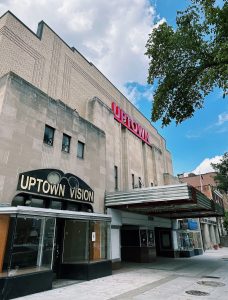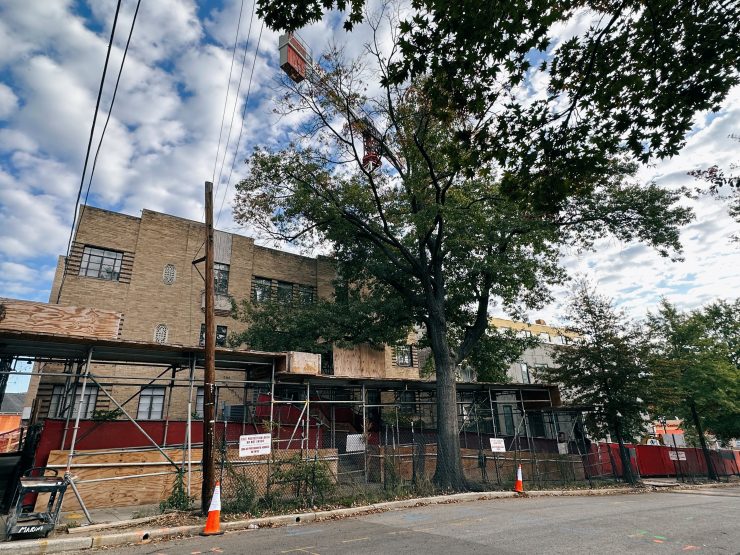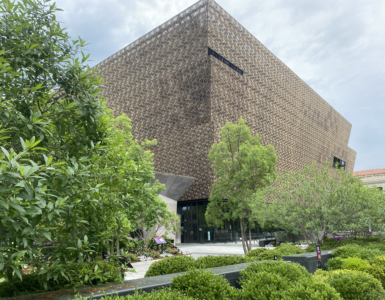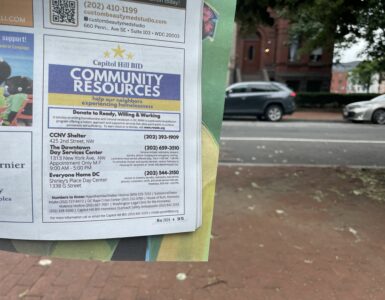The dispute over newly proposed design guidelines for Connecticut Avenue continues as concerns keep rising among Cleveland Park residents over whether to accept impending changes in the historic district.
The Historic Preservation Review Board voted 5-0 during a hearing last month to allow its members to consider the Bowser administration’s design guidelines for integrating high-rises into the area, which is currently lined by one and two-story buildings.
Heba ElGawish, a senior cross-system planner with the D.C. Office of Planning, said the next steps include initiating zoning changes within Cleveland Park.
“The housing equity report assigned the greatest production goals at approximately 2,000 affordable housing units in the area by 2025,” ElGawish said. “The next step would be to initiate these zoning changes to incentivize developments.”
According to the housing equity report, these production goals fall under Mayor Muriel Bowser’s order to address a number of housing challenges in the District.
Bob Ward, the chair of Cleveland Park Smart Growth, an advocacy group for urbanists, said many residents are skeptical of change due to the neighborhood’s historic nature.

“I think you have people who fought the good fight to make Cleveland Park a historic district,” Ward said. “They might be a little hesitant to change as a result of that.”
According to Cleveland Park Smart Growth’s website, the organization’s mission includes ensuring an economically vibrant, sustainable, and socially inclusive neighborhood in the greater Cleveland Park area.
Ward has chaired the organization since 2018. He said the advocacy group grew from a community-led effort to allow for greater density on Connecticut Avenue.
“There are a lot of areas in the city that are attracting a lot more restaurants, retail, and exciting places,” he said. “We consider this area an opportunity-rich neighborhood that can compete with those other neighborhoods due to our schools, walkability, and metro proximity.”
The “Connecticut Avenue Development Guidelines,” crafted by the Office of Planning, seek to amend zoning regulations to allow for high-rises of up to 75 feet. Currently, the district is zoned to accommodate 40-foot-tall buildings along the area.
During its September hearing, the Historic Preservation Review Board cautioned that its support of the guidelines does not mean the board would approve future projects, since the panel is still regulated by preservation law and needs to review each case for their own merits.
Stephen Hansen, the executive director of Cleveland Park’s Historical Society, said the organization is not satisfied with the approved guidelines, as they contradict the Historic Preservation Board’s standards.
“We’re not satisfied with the lack of sensitivity towards historic preservation,” Hansen said. “We are not opposed to increased development, but our position is, since it is a historic district, do it right.”
The Cleveland Park Historical Society is the neighborhood’s historic preservation organization. It was established in 1987 after the area became a national registered historic district, according to its website.
Hansen said the organization has produced its own set of design guidelines for Cleveland Park’s historic commercial corridor. In the guidelines, the organization highlights that historic preservation requires maintaining properties and places in active use, as well as accommodating improvements to sustain their viability.

“We know there will be future development in Cleveland Park,” he said. “We just wanted it to maintain the historic character and how low-scale the neighborhood is. I hope those are protected and maintained.”
Jill Hall, the president of the Rosedale Conservancy Board, said it is important the interests of the community are a priority when it comes to development.
“Whatever is done, I hope it is done responsibly and with the best interest of the community in mind,” she said.
The Rosedale Conservancy, a green space long recognized as Cleveland Park’s “village green,” is protected from development in perpetuity due to residents’ efforts to preserve the property and keep it open to the public, according to the group’s website.
Hall said the space brings the community together, as many residents consider it an urban oasis and the heart of the neighborhood.
“The more we can do to bring people together in the community, the better,” she said. “We’re lucky that this land existed, that it was undeveloped, and that the community was able to find a way to preserve it.”
Members of the Advisory Neighborhood Commission for Ward 3 did not respond to requests for comment.
Thomas Schneider, the owner and operator of Native Roots Conservation Landscaping, said the community is very engaged in preserving historical, green spaces in the area.
“The ‘not in my backyard’ factor is very strong,” Schneider said. “So, the threat to Cleveland Park is not as strong as in other areas.”
The administration guidelines also work to set a framework for integrating mixed-use development, with the goal of supporting the need for housing at various income levels and household sizes while sustaining a commercial corridor for residents and visitors.
The guidelines say Cleveland Park’s population has grown at about a third of the rate of the rest of the District in the past decade and is increasingly out of reach for a growing range of household incomes, with the demographic being overwhelmingly white and wealthy.

ElGawish said the goal of implementing the new guidelines is to speed up the production of affordable housing in the area.
“Part of the update to the comprehensive plan was to look at where can we accommodate this type of growth and opportunities,” she said. “We discovered that was primarily looking at transit corridors like Connecticut Avenue.”
ElGawish said the design guidelines are the first to bridge smart growth planning with historic preservation goals, especially when it comes to housing affordability.
“We can really look at them as setting a precedent for how historic districts and preservation can really contribute to District-wide goals of housing equity,” she said.
Ward said change cannot happen overnight in the neighborhood, but he will be supporting a process that benefits the community even if it takes years.
“At the end of the day, you got to make decisions that are best for the neighborhood,” he said. “If what they’re proposing is good for the community, then I’m going to be there to support.”
The city is seeking the construction of 36,000 new housing units by 2025, according to the mayor’s website. Almost 30,000 units have been built citywide since the plan’s announcement in 2019.















[…] Office of Planning previously told The Wash that zoning changes would be initiated in the neighborhood to encourage […]
[…] the Bowser administration’s design guidelines for Connecticut Avenue in Cleveland Park, raising concerns among residents in the area over whether to accept change in the historic […]